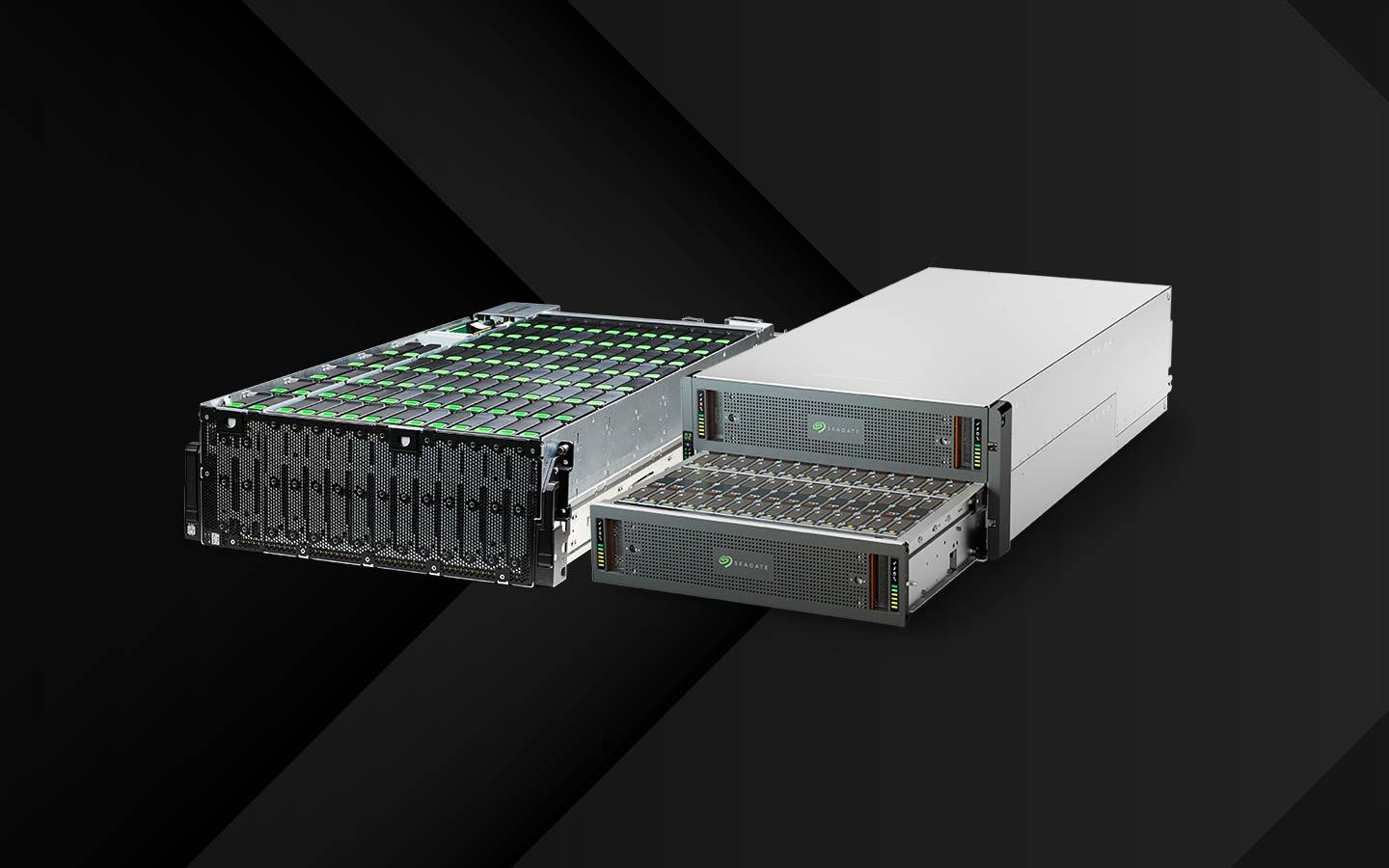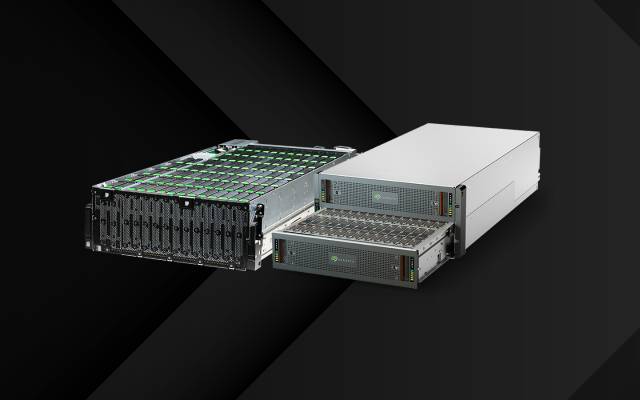Working with enterprise data storage architecture, you’ve likely encountered JBOD storage products. JBOD is a term that stands for either just a bunch of disks or just a bunch of drives, depending on who you ask. JBODs enable the grouping of multiple disks into single volumes. An alternative to RAID architectures (redundant array of independent disks), JBODs are an option for storage administrators who need reliable, low-cost capacity for their application. JBODs can help balance the costs of performance/capacity for a storage application and are basic data storage enclosures that offer significant performance benefits for short-term data storage applications.
Current hard disk and JBOD technology can provide fast, plug-and-play on-premises storage deployment and data accessibility with cost and space efficiency that rivals cloud and other storage alternatives.
This article will teach you some of the best practices for implementing JBOD systems when your company needs to swiftly scale its operations and support more capacity.
Advancements in JBOD Technology
A data center’s ability to grow while utilizing legacy JBOD solutions is limited by aging, power-hungry hardware, outdated interface standards, inflexible designs, and depleting inventories of legacy replacement parts.
A major JBOD age-related challenge includes the inability to integrate or upgrade to modern disk drives.
Planning for obsolescence reduces the risk of downtime, supports a durable, efficient storage infrastructure, and ultimately enables opportunities for more terabytes per square foot.
Other potential constraints that limit the useful life of older JBOD deployments—and therefore justify the adoption of modern versions of the technology—are newer connection standards, host interface compatibility, environmental concerns, and cybersecurity issues (some of which are requirements of modern servers and software applications).
New JBOD offerings cater to the ever-evolving requirements of storage technology, capacity, performance, availability, business, and cost.
The latest in JBOD advancements, innovations, and efficiencies enable businesses to deploy superior storage value and achieve better overall effectiveness and lower costs.
Hardware Components
With larger, faster disk drives, higher slot counts, and lower latencies, JBOD systems are pushing the boundaries of high-capacity and higher efficiency storage that can be readily scaled in a physical data center.
Modern storage interface standards deliver responsive data transfer speeds, while dual modules—for power, controllers, and cooling—support data availability.
The latest connection standards make it easier to integrate, configure, manage and grow a data center.
Software Components
As a basic storage enclosure, JBODs typically do not have software elements for data redundancy, performance, and data management. These tasks are typically handled by the host.
JBODs establish a connection with a host storage interface and operating system, which subsequently provides the file system and provisioning. User data is then managed by the host operating system and host application software to provide for the specific application used by the business.
What Are the Advantages of JBOD for Enterprise Architecture?
JBODs provide essential benefits to a data center, such as adaptability, local performance, and options for reliability that may be adjusted to suit a specific use case. These systems work best for short-term, transactional and transient storage applications, such as analytics and video.
JBODs are typically designed to connect to most hosts with a SAS (serial attached SCSI), making them ease to work with.
Scalability and Flexibility
Compared to other storage appliances, JBOD configurations are highly scalable, which can be critical to meet the needs of a growing business. If you’re looking to expand your organization’s storage space, you can easily accomplish that goal by adding more disk drives to the JBOD or chaining together multiple JBOD enclosures. Like the scalable benefits of cloud-based storage—but with the control and privacy of on-premises storage—this architecture gives your company more control over storage growth costs when the need arises.
JBODs can accommodate a mixture of drive types (HDD and SSD), form factors (SFF and LFF), and a variety of capacities. You can also combine disk drives that use SAS and SATA (serial ATA) interface connections in certain JBOD enclosures.
High Storage Capacity
With JBODs in place, file systems like Linux and others can provision and deploy basic storage volumes. These are made from groups of disks aggregated into a single named storage group.
These volumes consist of drive sets not configured with the data redundancy protection that other storage products like RAID arrays use.
JBODs deliver the full capacity of each disk drive for the volume supporting the software application using it.
Yet because there is no built-in data redundancy or data protection, with a JBOD, the best practice is to incorporate a data backup strategy in the event of an outage. One option is data replication to a duplicate JBOD that’s coordinated with a backup software application.
Efficient Data Management and Accessibility
Direct connections between JBOD enclosures and their host system is the most efficient topology. The JBOD data volume can be effectively managed by the host operating system, which can also make it available to the host's software applications and other hosts on the network.
Use Cases
The JBOD’s scalable and versatile features, along with its direct host attachment, provide the best accessibility and application efficiency. Because of this, JBOD systems are a valuable infrastructure investment for many companies and sectors.
JBOD arrays should be configured to the specific needs of your organization’s application and production goals.
Here are some examples of this data storage solution in action:
Data Centers and Cloud Storage
JBOD systems are a great option for application software hosting transactional storage and data repositories where RAID-like data protection may not be required. JBODs can provide the required storage without the extra costs for features that might not be needed for a specific application.
Media and Entertainment Industry
Media and entertainment companies require mass storage to accommodate large volumes of video and other rich media files for editing. A JBOD can give these companies efficient and secure temporary post-production workflow storage that keeps costs low while providing a scalable mass capacity intermediate layer for data in play. HDD or SSD drives can be used for application performance options.
Surveillance and Security Systems
Video surveillance applications and archives require responsive mass storage for management of incoming video. JBOD products are best suited for receiving and temporarily storing incoming assets and running video management software at scale.
Using JBOD Data Storage in Your Data Center
Like a massive external storage device, JBODs connect directly to application hosts and extend the hosts’ local storage needs.
JBODs are best for short-term, fast, high-availability needs like:
- Transactional applications where data needs to be written to or read from storage quickly.
- Temporary storage for incoming data to be transferred to other longer term storage.
- Production and short-term backup application.
JBOD products offer various-sized enclosure options that can be aligned and grow with an application’s capacity requirements. Storage can be easily added to the system using the right type of HDD or SSD drives that align with the application’s size and performance requirements. Enclosures can be chained together for even higher multiplied storage requirements. And JBODs can easily match storage needs and costs over time because they are easy to modify.
Effective planning will extend the value and performance that JBODs can deliver for your organization.
As you look ahead to a JBOD configuration, consider the following:
- How much data storage does your organization need? Determine the initial storage capacity requirements and add drive slots for future growth. Planning for future storage needs will help you determine the initial cost of implementation, as well as physical space and power requirements, and deployment costs over time.
- Choose the type of drive that matches the application. If fast transactional response is needed, then SSDs could be an be an option. If cost and better reliability are needed, consider an HDD JBOD.
- Will the data on the JBOD need to be protected? Depending on the type of data in the workflow, the host and JBOD data may need to be part of a data protection plan. Implementation options could include host-based RAID software for the JBOD or data backed up to another storage resource.
Advancements in JBOD Technology
Seagate JBOD solutions enable data centers to use modern drive technology and mass capacity. Their modular design, superior density, and power efficiency provide lower overall costs of ownership.
With a focus on maximizing user value, Seagate JBOD systems push innovation boundaries and deliver superior high-capacity, high-efficiency storage that can be readily integrated and scaled in a modern data center.
High slot counts and dual 12G SAS host interface modules deliver responsive data transfer speeds, while dual modules for power and cooling make it easy to configure, integrate, manage, and grow a data center’s ability to store more data.
The enterprise-grade design of Seagate Exos® E JBOD products allows for efficient serviceability of the hardware where needed. Super compatible, Seagate JBODs work seamlessly, with today's interface protocols, operating systems, and application software.
Seagate JBOD products are designed to offer compatible petabyte capacity and high-efficiency block storage that delivers peace of mind with hardware features to protect data in play, including dual power supplies, fan modules, dual I/O modules, and dual data paths to all drives. These solutions are super scalable with drive capacity and slot quantity options, as well as enclosure-to-enclosure connectivity.
Connect with a Seagate architecture expert today to learn more about the benefits of implementing a JBOD configuration in your enterprise data center.












